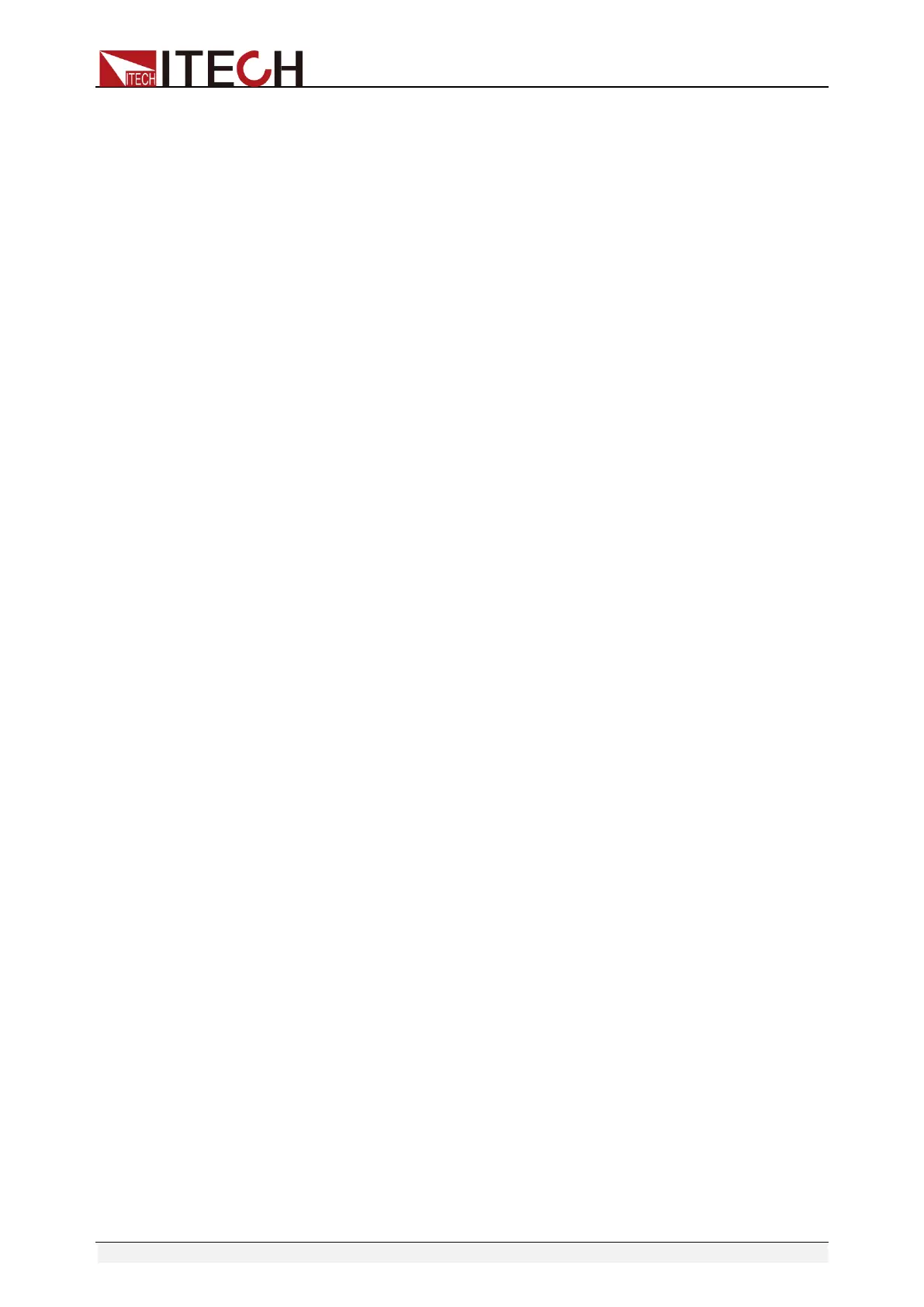IT-M3400 Programming Guide
Copyright © Itech Electronic Co., Ltd. 19
⚫ Numerical parameter
Commands requiring numerical parameter support the notations of all
common decimal notations, including optional signs, decimal points,
scientific notation, etc. Special values of numerical parameter are also
acceptable, such as MIN, MAX and DEF. In addition, suffixes for
engineering units can also be sent together with numerical parameter
(including M, k, m or u). If the command accepts only some specific values,
the instrument will automatically round the input parameter to acceptable
values. The following commands require numerical parameter of frequency
value:
[SOURce[1|2]:]FREQuency:CENTer
{<Frequency>|MINimum|MAXimum}
– <NR1>: represents an integer value, such as 273;
– <NR2>: represents a real number in floating-point format, such as .273;
– <NR3>: represents a real number in scientific notation, such as 2.73E+2;
– <Nrf>: The extensible form includes <NR1>, <NR2> and <NR3>;
– <Nrf+>: The extensible decimal form includes <Nrf>, MIN, MAX and DEF.
MIN and MAX are the minimum and maximum finite number. Within the
range of the parameter definition, DEF is the default of the parameter.
⚫ Discrete parameter
Discrete parameter are used for settings with limited number of
programming values (such as IMMediate, EXTernal or BUS). They can use
short and long format like key words of commands. They may be
expressed in both upper and lower case. The query response always
returns uppercase Parameter in short format. The following commands
require discrete parameter in voltage unit:
[SOURce[1|2]:]VOLTage:UNIT {VPP|VRMS|DBM}
⚫ Boolean parameter
Boolean parameter refer to true or false binary conditions. In case of false
conditions, the instrument will accept "OFF" or "0". In case of true
conditions, the instrument will accept "ON" or "1". In query of Boolean
settings, the instrument will always return "0" or "1". Boolean parameter are
required by the following commands:
DISPlay {OFF|0|ON|1}
⚫ ASCII string parameter
String parameter may actually include all ASCII character sets. Character
strings must start and end with paired quotation marks; and single
quotation marks or double quotation marks are both allowed. Quotation
mark separators may also act as one part of a string, they can be typed
twice without any character added between them. String parameter is used
in the following command:
DISPlay:TEXT <quoted string>
For example, the following commands display message of "WAITING..."
(without quotation marks) on the front panel of the instrument.
DISP:TEXT "WAITING..."
Single quotation marks may also be used to display the same message.
DISP:TEXT 'WAITING...'
– <SPD>: string program data. String parameters enclosed in single or
double quotes.
– <CPD>: character program data.
1.7 Remote Interface Connections
Please refer to user manual for detailed introductions of the remote interface.
